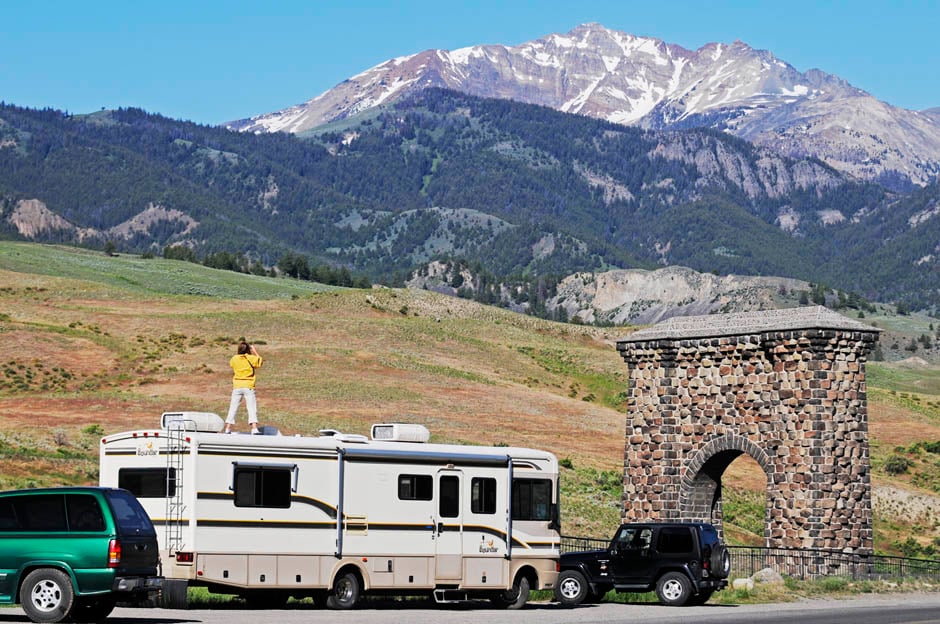
Roosevelt Arch - Yellowstone Park
(Photo by Eric Peterson)
Every day at the north entrance of Yellowstone National Park, cars stream under the historic Roosevelt Arch, a stone structure inscribed with a well-known phrase: For the benefit and enjoyment of the people.
It's a popular place to stop for photos, and it's also a place where traffic congests as long lines form to enter the park.
But the park has a plan to abate that traffic. Thursday, the park released a proposal that calls for adding a second entrance so visitors can choose to use a new access road to avoid the line of cars under the arch.
Expanded parking and new pedestrian walkways would also be added to make it easier for visitors to access businesses along Park Street in Gardiner. An administrative road in front of the Gardiner Transportation Center would be moved to separate traffic from delivery vehicles and employee parking.
The proposal is open for public review and can be found online at http://parkplanning.nps.gov/yell. A hard copy or CD can be requested by calling (307) 344-2661 or by writing to the North Entrance/Park Street EA, National Park Service, P. O. Box 168, Yellowstone National Park, Wyoming 82190.
Written comments may be submitted through the website, in person or by mail and must be received or postmarked by midnight, Aug. 13, 2011.
Comments will not be accepted by phone, fax, or email. Submitted responses may be made publicly available at any time.
Story courtesy of the Bozeman Daily Chronicle
All best,
______________________
Jason Frey
Agent
PureWest, Inc.
jason.frey@purewestproperties.com
http://www.linkedin.com/in/jasonfreylifewideopen









